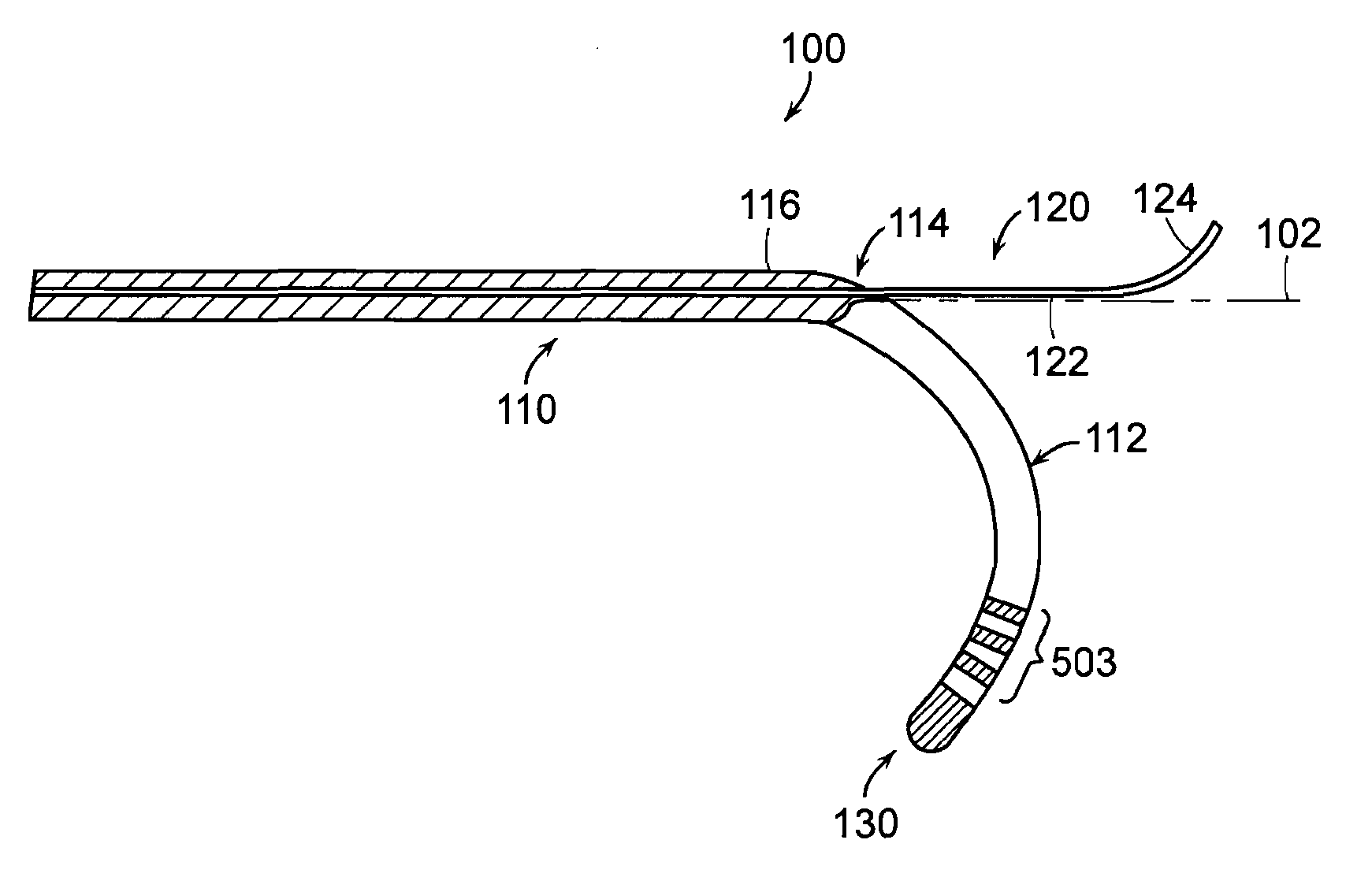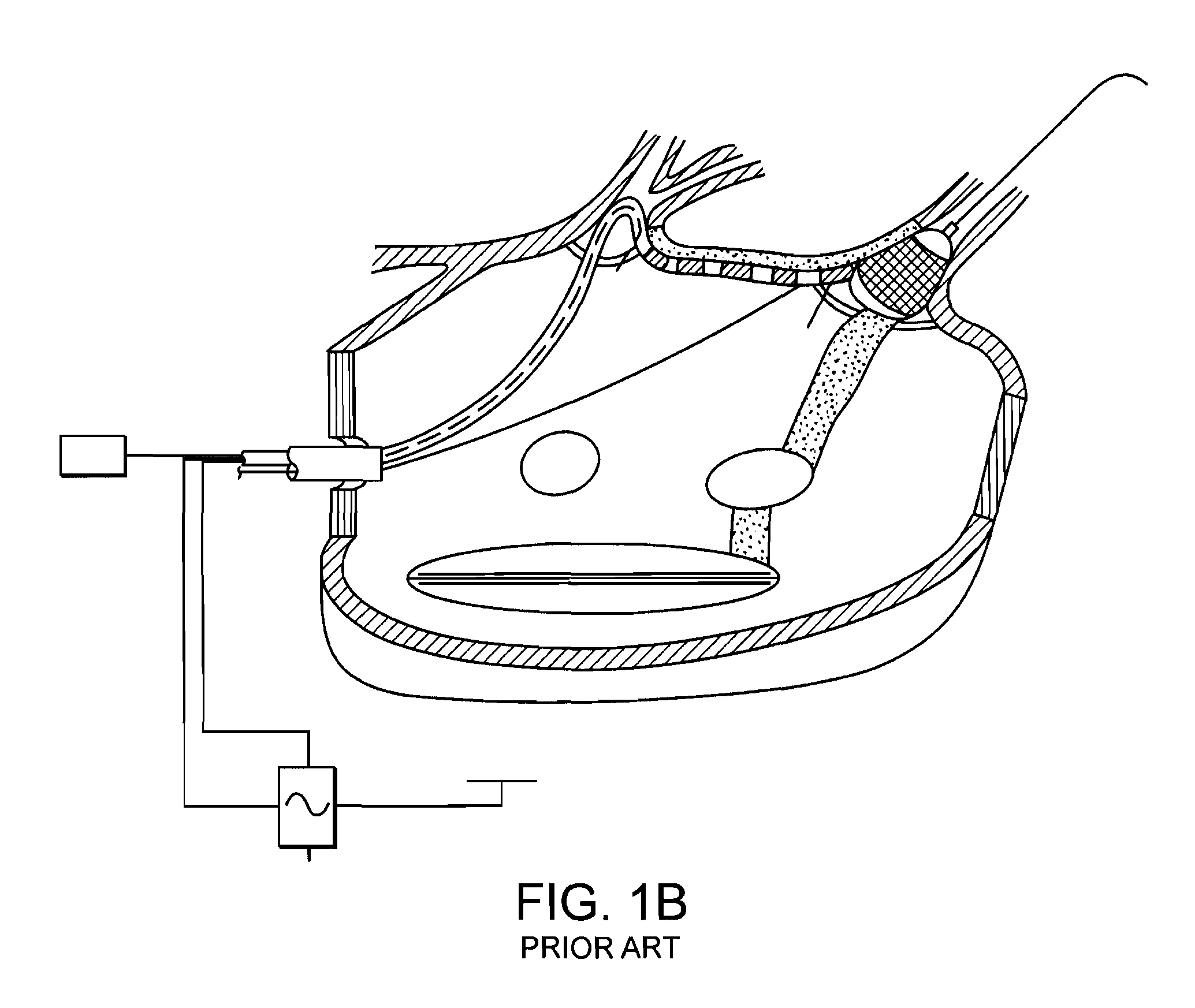Catheter and method for ablation of atrial tissue
a catheter and atrial tissue technology, applied in the field of surgical methods and devices for ablation of atrial tissue, can solve the problems of unsatisfactory complication rate of procedures, risks associated with such procedures, and drugs that only mask symptoms and do not cure the underlying
- Summary
- Abstract
- Description
- Claims
- Application Information
AI Technical Summary
Benefits of technology
Problems solved by technology
Method used
Image
Examples
Embodiment Construction
[0048]Referring now to the various figures of the drawing wherein like reference characters refer to like parts, there is shown in FIGS. 2A,B various views of a catheter device 100 according to an aspect of the present invention that is configured and arranged for ablation of tissue. Such a catheter device includes an elongated body member 110 having a distal portion 112 and a deflection mechanism that is operably coupled to the distal portion so as to cause the distal portion to deflect with respect to a longitudinal axis 102 of the elongated body member.
[0049]As is known to those skilled in the art, the elongated body portion 110 is configured and arranged (e.g., sized) so that it can be introduced into the circulatory system and passed through portions of the circulatory system so the end of the distal portion 112 of the catheter device 100 can be localized to the tissue to be treated and / or analyzed. For example, the operable end of the distal portion 112 can be located in the l...
PUM
 Login to View More
Login to View More Abstract
Description
Claims
Application Information
 Login to View More
Login to View More - Generate Ideas
- Intellectual Property
- Life Sciences
- Materials
- Tech Scout
- Unparalleled Data Quality
- Higher Quality Content
- 60% Fewer Hallucinations
Browse by: Latest US Patents, China's latest patents, Technical Efficacy Thesaurus, Application Domain, Technology Topic, Popular Technical Reports.
© 2025 PatSnap. All rights reserved.Legal|Privacy policy|Modern Slavery Act Transparency Statement|Sitemap|About US| Contact US: help@patsnap.com



